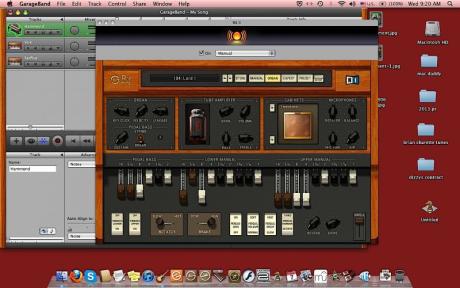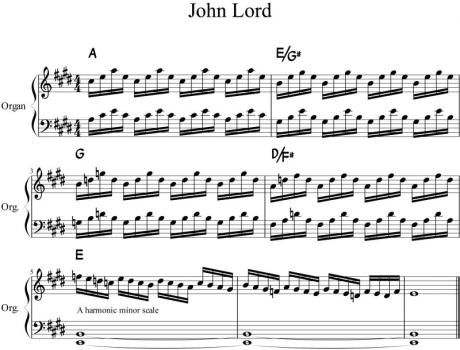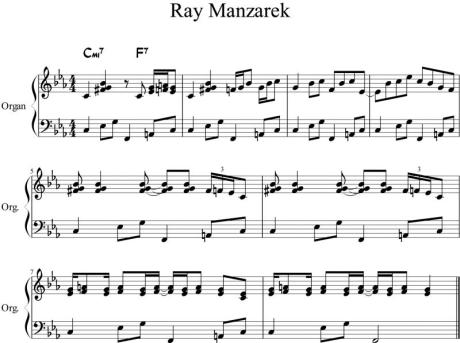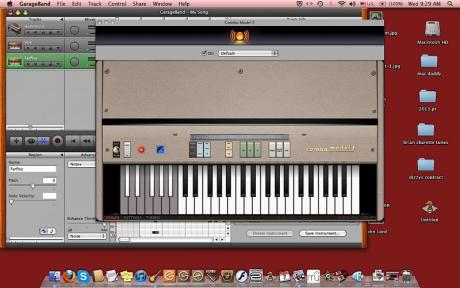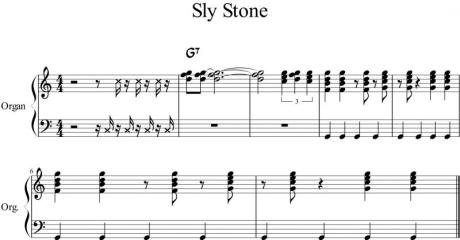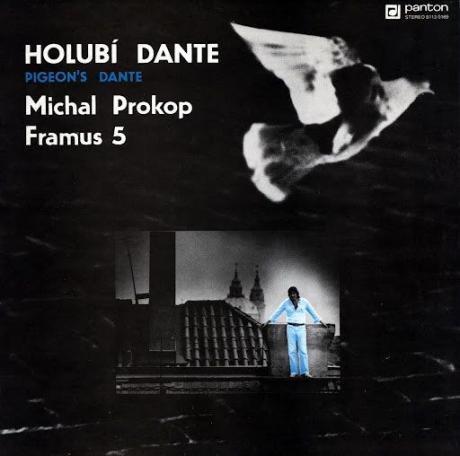Rock Organ I
Čtenáři, možná vás zaskočí, že na českých stránkách nacházíte anglický text. Není to chyba. V současné době pro časopis Muzikus píše newyorkský klávesista a pianista Brian Charette. A tak jsem si v redakci řekli, že bychom mohli něco udělat pro zlepšení vašich znalostí angličtiny. Určitě nám dáte za pravdu, že angličtina se na pódiích objevuje stále častěji a potřeba domluvit se na pódiu i v zákulisí se stane brzy samozřejmosti. Proto zde naleznete originální verzi přímo od Briana a na stránkách časopisu Muzikus v čísle 10/2013 článek přeložený Petrem Štikou. Navíc zde máte audio ukázky, které do časopisu jaksi přeložit neumíme. Enjoy reading!
šéfredaktor časopisu Muzikus Ing. Vladimír Švanda
Rock Organ 1
In this month's article, I'd like to talk about four important rock organists by examining their instruments, settings, and techniques. Organ has always been a crucial instrument in rock music. These four gentleman basically wrote the book on playing rock organ, and it's difficult to find any modern keyboardists who are not heavily influenced by them. We will take an in depth look at John Lord and Keith Emerson and their use of the Hammond Organ, Ray Manzarek's use of Vox Continental, and Sly Stone's use of a Farfisa Professional. Because of copy write restrictions we can't include exact transcriptions, so I've designed exercises that illustrate the most important elements of each organist's style.
John Lord
John Lord was a groundbreaking Hammond organist who combined the Blues sound of Jimmy Smith and Jack Mcduff with the Baroque keyboard music of J.S Bach to become, arguably, the first "Heavy Metal" keyboardist. John's sound combined with Richie Blackmore's blistering guitar work, propelled Deep Purple to the forefront of early 70's Rock. The Hammond Organ was invented by Laurens Hammond who, besides making organs, held 90 other patents including innovations in guided missiles, automatic transmissions, and 3D movie glasses! The Hammond Organ was marketed as a lower-cost alternative to the pipe organ and it quickly became popular in Jazz.
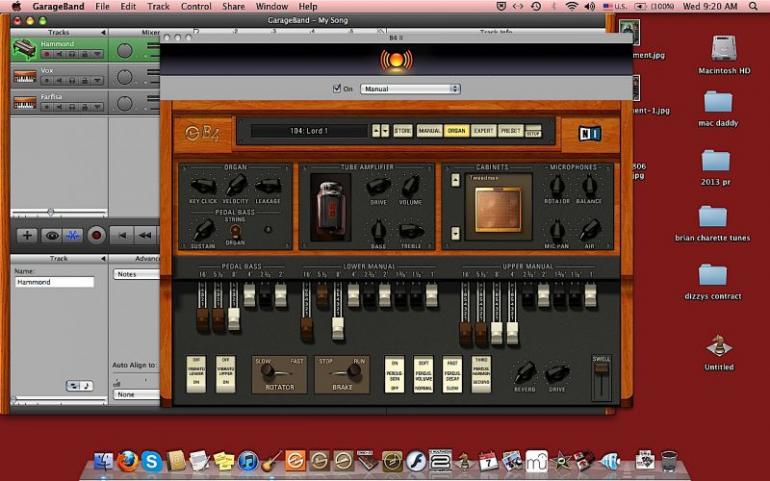
Jimmy Smith's use of the Hammond B-3 inspired many organ players, and its use became more widespread in the 1960s and 1970s in Rock and R&B bands. In contrast to previous Hammond Organists who relied heavily on the rotary sound of a Leslie speaker, John pushed his organ (Usually a B3 or C3 model) through Marshal amplifiers to achieve his trademark sound. John was partial to this drawbar setting: 8888000 000, often with no percussion or vibrato and heavily overdriven by a Marshal amplifier.
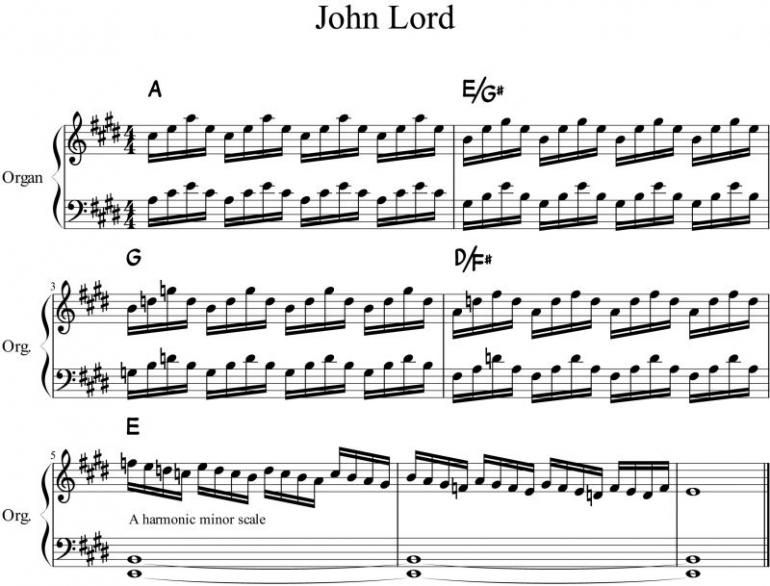
Musical example 1: This exercise begins with a Bach influenced 16th note triadic arpeggio in two hands. The harmony descends with interesting chord inversions arriving at an E "power chord" in bar 5 with an A harmonic minor scale creating an exotic riff.
Keith Emerson
Also an incredible Hammond Organist, Keith Emerson became very interested in the Hammond Organ after hearing a recording of Jack McDuff playing his hit tune, Rock Candy. In addition to playing a Hammond C3, Emerson also played a Hammond L100 which had a self-starting motor, which, if turned off and on, makes a strange howling sound. The L-100 also features a spring-loaded reverb tank, which produces bomb-like noises if shaken. In The Nice and more famously, ELP, Keith would combine his prodigious Classical and Jazz know-how with violent shaking and stabbing of his organs with a knife (?!?!) to achieve his Keyboard Rock God status.

Keith, like John Lord, would also overdrive his organ through Marshall Amplifiers; He would use more percussion and vibrato though. A common Keith Emerson drawbar setting is 888000000, Vibrato C3, Percussion...Normal volume, short decay, 3rd harmonic. The lower manual he would often set to 008800000 for windmill chops where he would slap the keys and do many hand over hand glissandos.
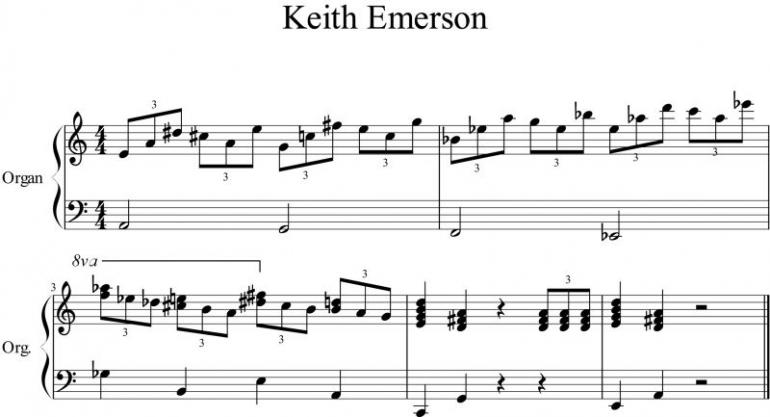
Musical example 2: Here, Keith uses a Lydian (triads with a #4) shape over a descending bassline. The right hand ascends in minor thirds before descending in a triadic chordal pattern. By combining the triads in bar 3 with unusual basslines, Keith creates interesting Major 7th and Sus chords; Beat 1: Gb Maj 7, Beat 2: B7 sus 4, Beat 3: E Maj 7, Beat 4, A7 sus 4. The exercise ends with a typical Keith cadence with dramatic triplets.
Ray Manzerek
Ray Manzerek was a film student at UCLA when he met fellow film student, Jim Morrison on Venice beach and founded one of the most interesting and influential art rock bands, The Doors. Initially there was no bassist in the Doors. Ray would play the bass in his left hand on a Fender Bass Keyboard (basically a smaller version of a Fender Rhodes) perched on top of a keyboard that would be the defining sound of the Doors, The Vox Continental. The Continental is a transistor based combo organ that was introduced in 1962. Known for its bright, reedy sound, It was designed to be used by touring musicians as a light-weight alternative to the Hammond B3.
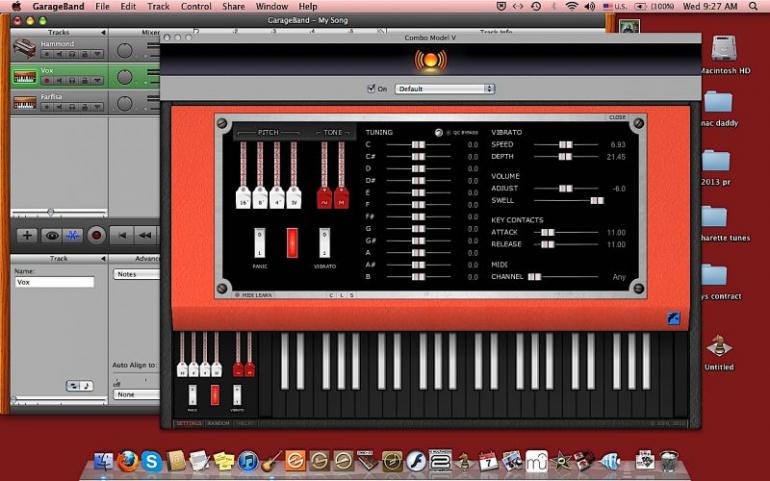
The Vox Continental used six slider-type drawbars instead of the rocker switches seen on other combo organs. Two drawbars controlled the flute and reed tones, and three of the other four controlled the footages, the last one controlled the mix of the drawbars. There was also a single-speed vibrato. On later Doors albums, Ray switched to a Gibson Organ because the Continentals would supposedly break often. It's a little tough to find out exactly the settings for songs like „Light my Fire“. I have read on internet forums that in recent history, Ray would pull all the bars out and use the vibrato to taste.
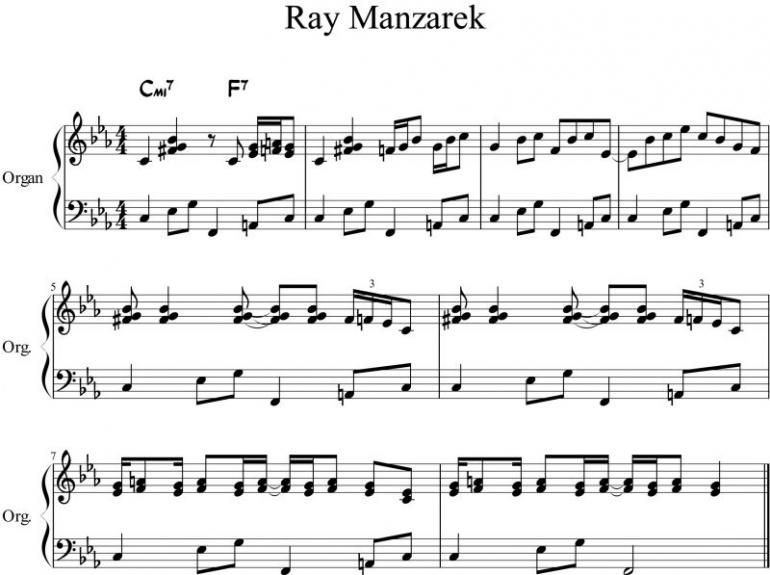
Musical example 3: Here we see Ray riffing over a very common bass line like he would play with the Doors. His right hand lines use the C blues scale (C Eb F F# G Bb C) almost exclusively. Beginning in Bar 3, we start to see the defining characteristic of Ray's lines; syncopation. Over the very steady ostinato of the bass, Ray creates off beat passages to push the rhythm forward. For your own practice try keeping the bassline going while playing improvisations based on the blues scale. For extra credit try transposing these ideas into different keys.
Sly Stone
Sly Stone was pioneer of late 1960s and early '70s funk. He fused R&B, Rock, and Psychedelia, with racial and political messages to create a groundbreaking brand of music that would have a profound impact on later artists such as Prince and Rick James.
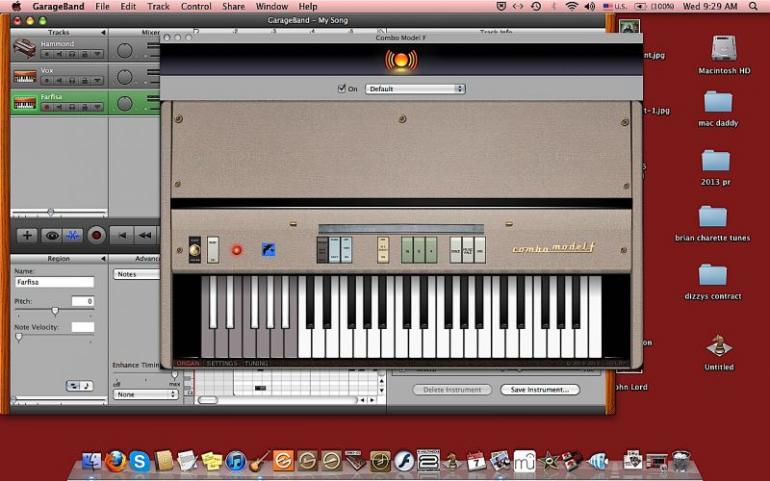
Sly used many different keyboards, but the one probably most associated with him is the Italian made Farfisa Professional. Originally produced in 1968, TheFarfisa Professional had an unusual shrill sound, rotary simulator, and percussion. It had three basic voices, Flutes, Clarinets, and Sharps plus Percussion and Vibrato selectable separately for each voice type (a rather unusual feature). The four voices could be mixed in any amounts by using four sliders. For our example, I've turned all the voices on and added some vibrato.

Musical example 4: This passage begins with 2 hands slapping a rhythmic figure which leads to a screaming G7 shape. In Bar 4 the bass enters ala Larry Grahm. In the Right hand, Sly makes a repeating comping figure of the G and C chords over the G pedal Point.
